Water, Wisconsin's key natural resource, faces storm runoff threat

Water faces storm runoff threat in Wisconsin
Just because we have so much water, doesn't mean Wisconsin is invincible to human impacts on water quality.
MILWAUKEE - Whether you realize it or not, Wisconsin has a lot of water compared to the rest of the country. The Great Lakes region as a whole has some of the largest reserves of fresh water in the entire world.
"I would absolutely say that water is our greatest natural resource in Wisconsin," said Bri Plier, sustainability manager for Milwaukee Metropolitan Sewerage District.
But just because we have so much doesn't mean Wisconsin is invincible to human impacts on water quality. Possibly our greatest threat is storm runoff and what gets drawn into our bodies of water because of it.
SIGN UP TODAY: Get daily headlines, breaking news emails from FOX6 News
"If we get 1 inch of rain across our entire service area, that’s more than 7 billion gallons of water that falls," Plier said. She added that's just for Milwaukee. Just a 1-inch rain drops billions more gallons across southeast Wisconsin, and most of it ends up in Lake Michigan one way or another.
Why this is so impactful is because this is where a majority of our region's drinking water comes from. And most recently, Waukesha can be included in that as well.
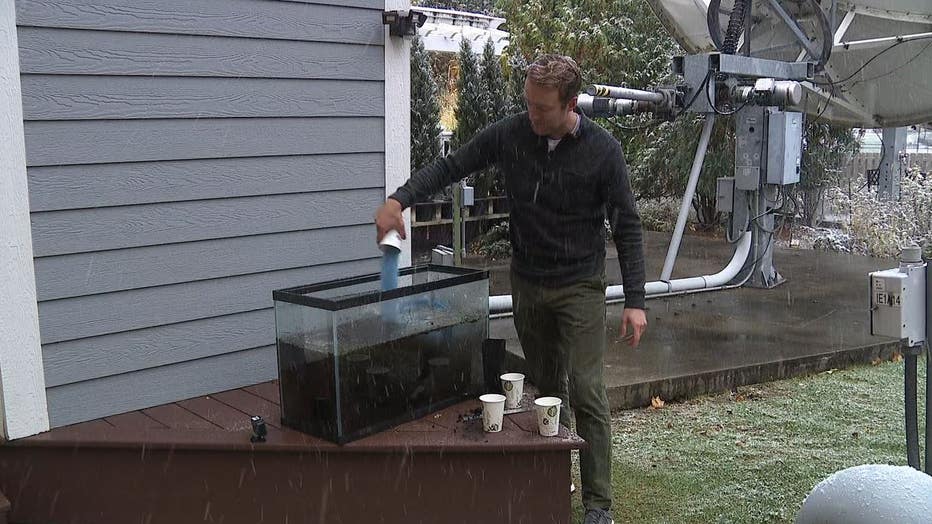
Dirt, yard clippings, fertilizer and salt mix together to make one gross concoction. This fish tank water is similar to what's running off your yard into our water supply.
Erosion from stormwater drags in massive quantities of dirt. With it comes fertilizers, salt, pesticides and everything else that gets applied to the ground.
"When we see high levels of salt even in the summer when we haven’t been salting in a long time, that’s bad for aquatic life," said Plier. "Not just fish and the invertebrates and amphibians, but also vegetation in the waterways. It really destroys water quality."
Much of the world is desperate for freshwater and would likely be appalled with just how many pollutants we let enter our Great Lakes. But one of the biggest offenders are farmers.
FREE DOWNLOAD: Get breaking news alerts in the FOX6 News app for iOS or Android.
Manure and other fertilizers spread across dormant fields often lead to massive amounts of phosphorus and nitrogen leaching into our rivers. This causes toxic algal blooms downstream which can turn water poisonous to most life – including us. Gulf Coast states, Lake Erie and even rivers near large agriculture communities in Wisconsin deal with this on a daily basis as temperatures warm.
Fortunately, our section of Lake Michigan has minimal influence from phosphorous and nitrogen run off from farmers, but that doesn't stop one area farmer from making a difference. Jim Stute, a farmer and research agronomist, performs what is called regenerative agriculture on his land in Walworth County.
"I don’t want anything I’ve invested in whether it’s nitrogen or phosphorus to leave the farm, I want to bank it here," said Stute.
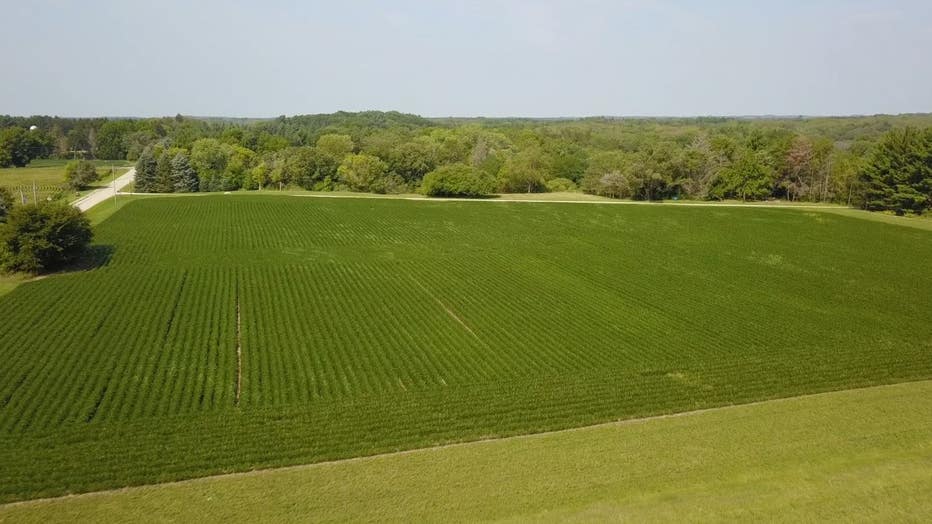
Soybean field that Jim Stute farms in Walworth County
By only disturbing the soil when putting down seed, Stute does a process called no tilling. Tilling the soil can improve the growth rates of crops, but often in the process loosens soil that can be easily taken away in heavy rain. Another important step Stute takes is rotating crops, allowing the previous year's growth to break down naturally in his field.
"These roots decompose, those root channels are there, so it’s a natural conduit for the water to infiltrate," he said.
Stute also adds this extra debris on the surface to slow the water down similar to how a speed bump acts. All this decaying plant matter allows for fungus, bacteria, worm species and arthropods to break down the plants naturally and help build soils in the process.
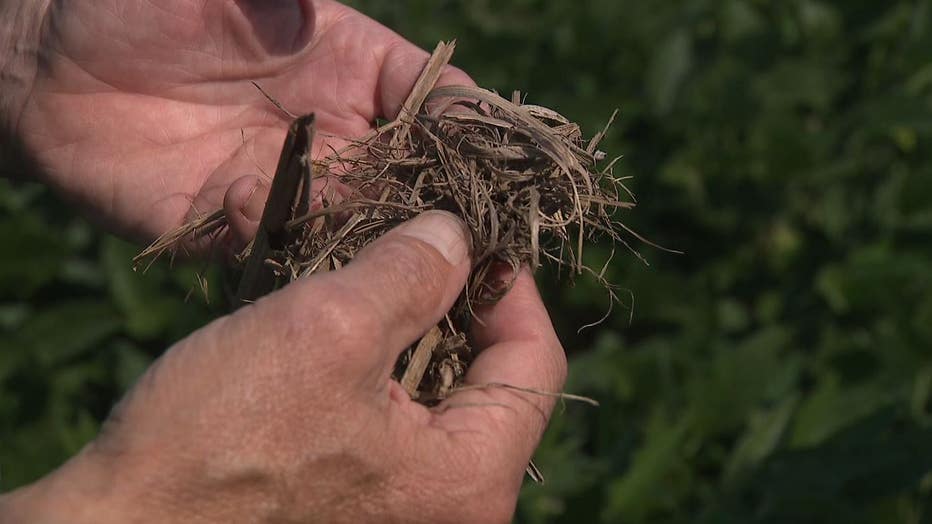
Previous crops thatch laying on the surface of the soil on Jim Stute's farm
Stute also has large buffers of grass on the edges of his fields to collect any lost fertilizer from his land. This acts as another barrier between him and the nearby Mukwonago River. And the proof is in the pudding: Not only does his nearby stream have incredible trout habitat, but it's also crystal clear.
The farmer isn't alone – "20 years ago, yeah I, would have said I’m the exception, but we have this movement in the state of Wisconsin – the producer-led protection watershed movement" – as other like-minded farmers in the region look out for a resource they need too: water.
But most people don't own farms in southeast Wisconsin. You can still make a difference in your yard, and it starts with native plants and our natural stormwater managers.
"The great thing about native plants is they have long root systems that allow water to infiltrate easier, especially into our clay soils here in southeast Wisconsin," said Emily Helm, a land steward for the Urban Ecology Center in Milwaukee.
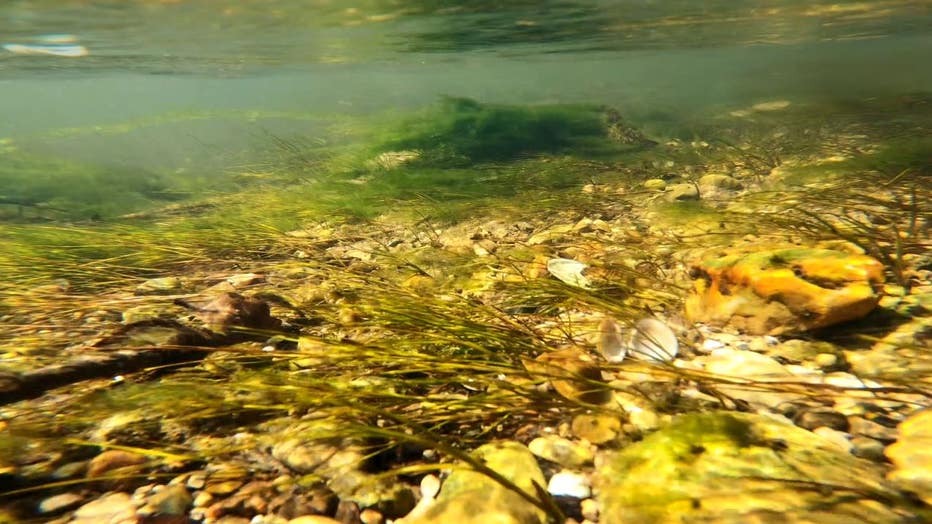
Healthy and clear water in the Mukwonago River
Wetlands are the very best in the business when it comes to slowing water down and holding it like a sponge. The Urban Ecology Center keeps this in mind during any of its restoration projects.
"Our turf grass, lawn grass that has when you think about it inches of roots, so about 4-8 inches of root material opposed to our tall grass prairie forbs have multiple feet worth of roots," said Helm.
The region's historical tall grass prairies and Oak Savannas could sustain massive storms, and these have been replaced with turf and other non-native vegetation that need artificial boosts from humans to keep them alive.
No fertilizer is needed with native species, which makes them perfect for rain gardens. But what if you hardly have a yard at all? This is where leaves come to the rescue.
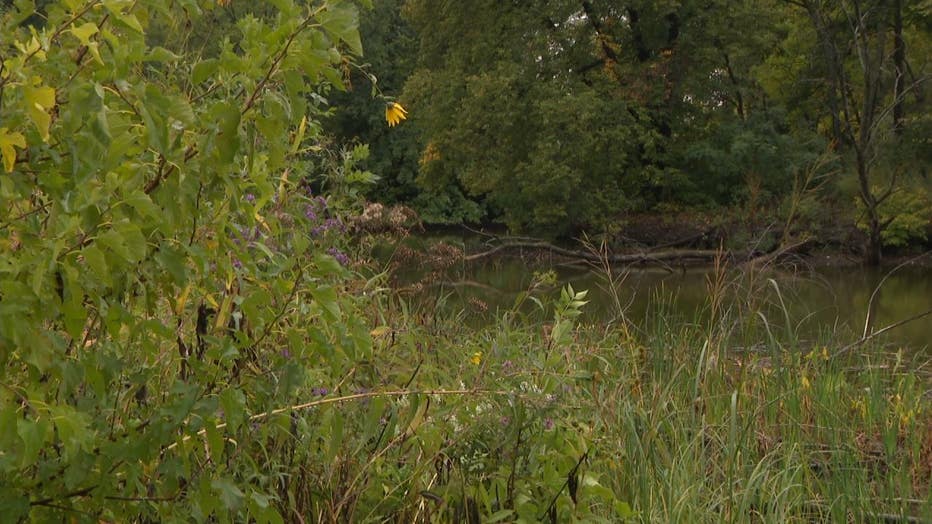
Wetland edge at Washington Park
Letting leaves stay where they fall can also act as a way to slow down water. Over time, leaves break down and provide extra friction for storm water. This creates that food the microorganisms mentioned above at Stute's farm to help create rich soils in the process. As an added bonus, hundreds of insects conclude their life cycles in that leaf litter, and you'll improve the biodiversity without breaking a sweat.
Naturalizing parts of your turf lawn and allowing native plants and leaf litter to collect are some of the easiest and most impactful things you can do.
MMSD also offers classes and sales of native plants to help keep water where it falls in your yard, and the Urban Ecology Center has all kinds of habitats for you to explore and give you ideas on how to incorporate natives into your yard as well.
There's no reason Wisconsin can't continue to have one of the most valuable natural resources in the world. Treating our freshwater as important as it is and limiting what we allow to pollute it is key to keep it as great as it is for generations to come.

